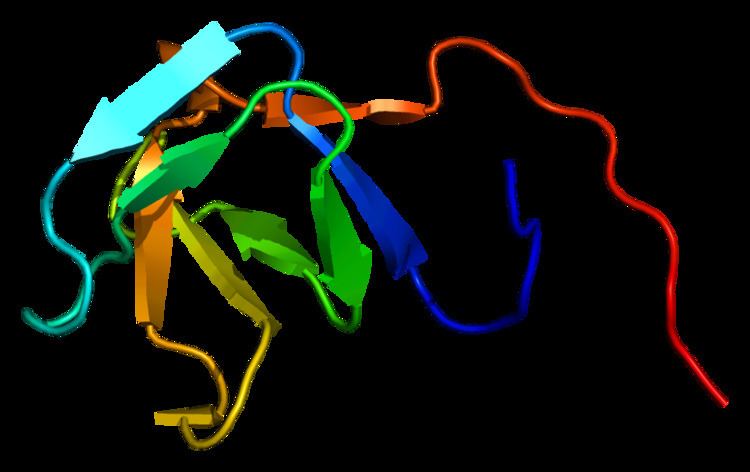Entrez 5335 | Ensembl ENSG00000124181 | |
 | ||
Aliases PLCG1, NCKAP3, PLC-II, PLC1, PLC148, PLCgamma1, phospholipase C gamma 1 External IDs MGI: 97615 HomoloGene: 1997 GeneCards: PLCG1 | ||
Phospholipase C, gamma 1, also known as PLCG1, is a protein that in humans is encoded by the PLCG1 gene.
Contents
Function
The protein encoded by this gene catalyzes the formation of inositol 1,4,5-trisphosphate and diacylglycerol from phosphatidylinositol 4,5-bisphosphate. This reaction uses calcium as a cofactor and plays an important role in the intracellular transduction of receptor-mediated tyrosine kinase activators. For example, when activated by SRC, the encoded protein causes the Ras guanine nucleotide exchange factor RASGRP1 to translocate to the Golgi apparatus, where it activates Ras. Also, this protein has been shown to be a major substrate for heparin-binding growth factor 1 (acidic fibroblast growth factor)-activated tyrosine kinase. The receptor protein tyrosine phosphatase PTPmu (PTPRM) is capable of dephosphorylating PLCG1. Two transcript variants encoding different isoforms have been found for this gene.
Has been shown to interact with CISH which negatively regulates it by targeting it for degradation. The deletion of Cish in effector T cells has been shown to augment TCR signaling and subsequent effector cytokine release, proliferation and survival. The adoptive transfer of tumor-specific effector T cells knocked out or knocked down for CISH resulted in a significant increase in functional avidity and long-term tumor immunity. There are no changes in activity or phosphorylation of Cish's purported target, STAT5 in either the presence or absence of Cish.
Clinical significance
Researchers studying PLCg1 and its role in breast cancer metastasis discovered this gene can promote cancer metastasis and subsequently blocking it stopped cancer from spreading. Research is ongoing but this gene could lead to the development of new anti-cancer drugs.
Interactions
PLCG1 has been shown to interact with:
